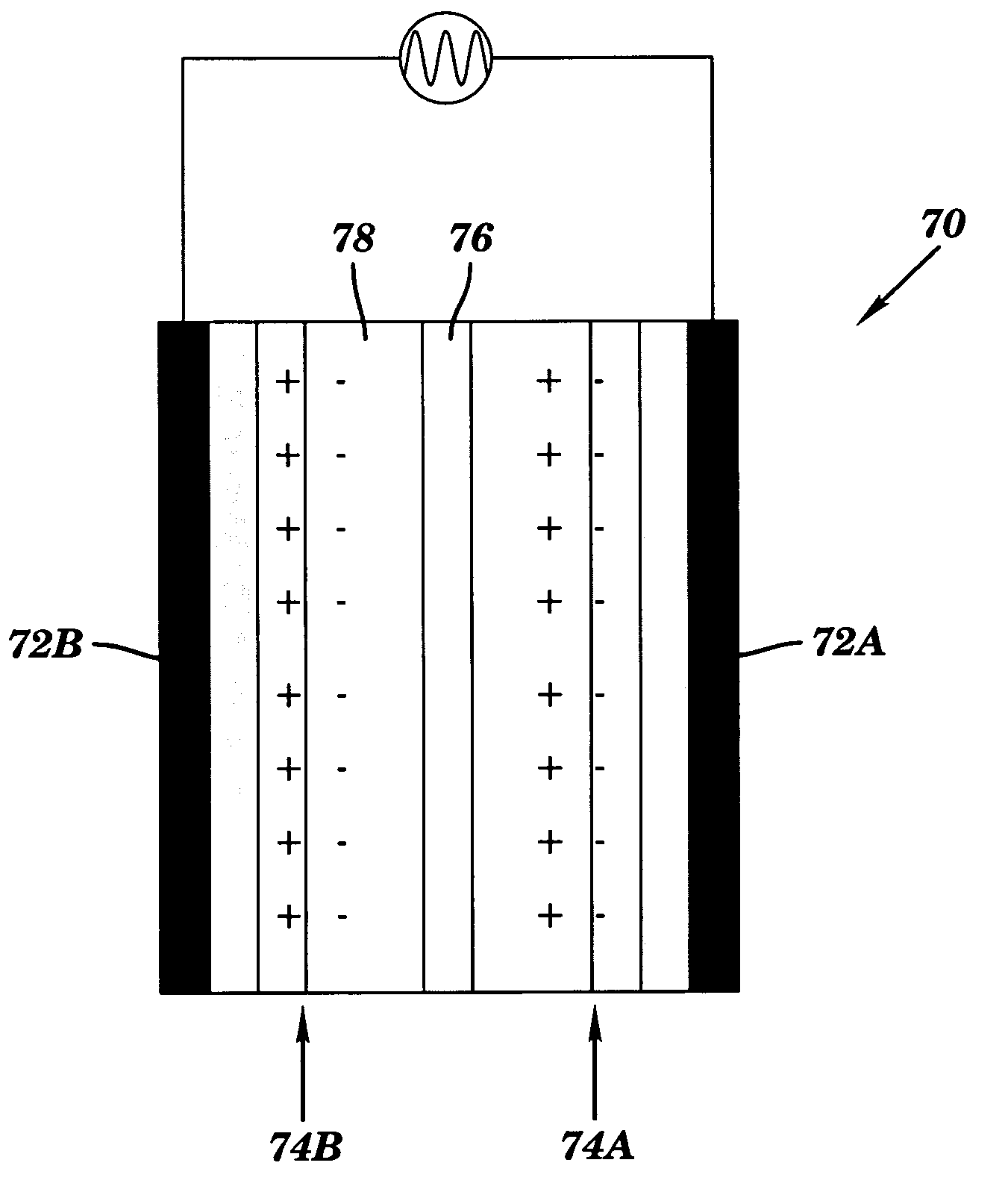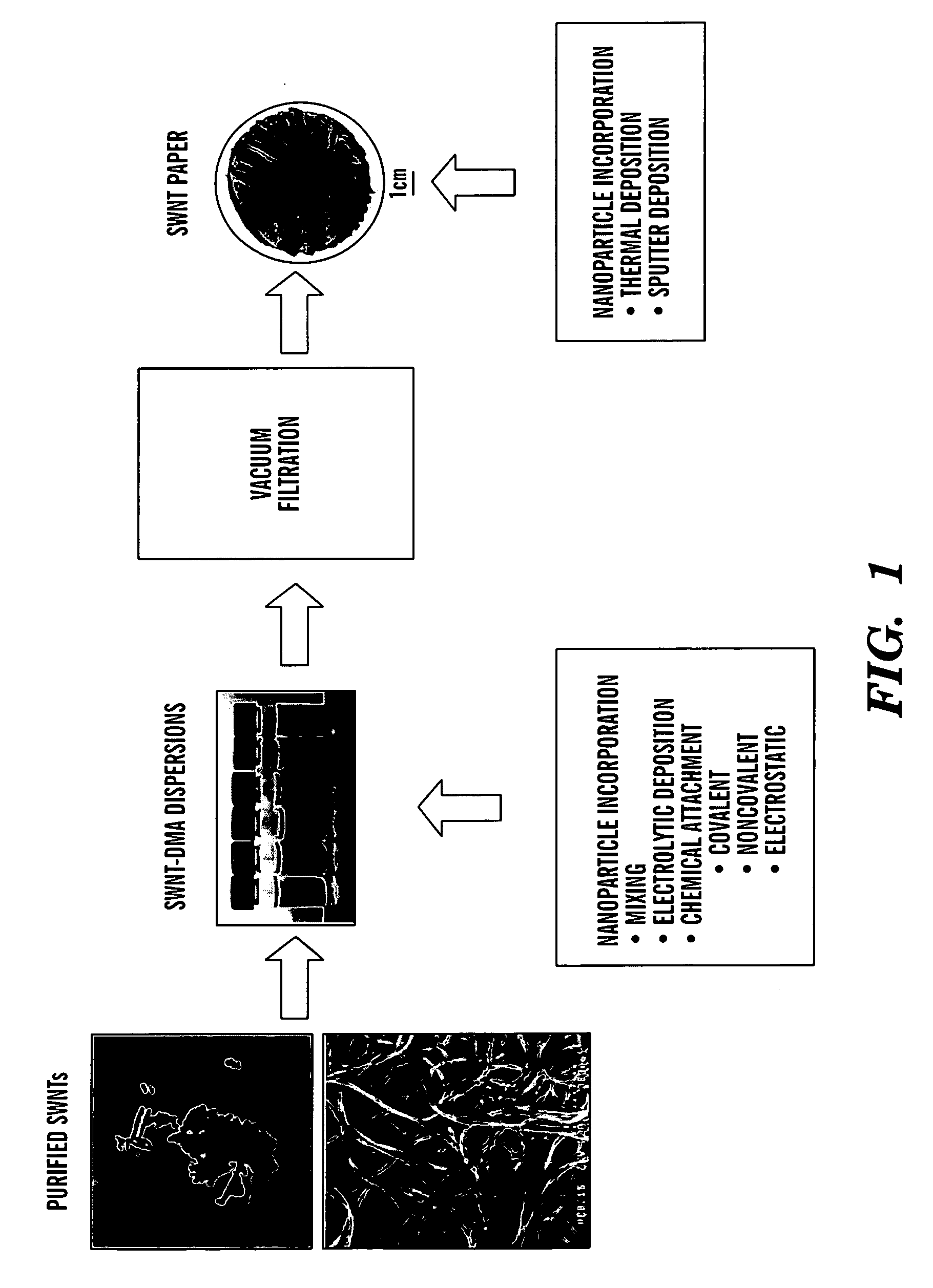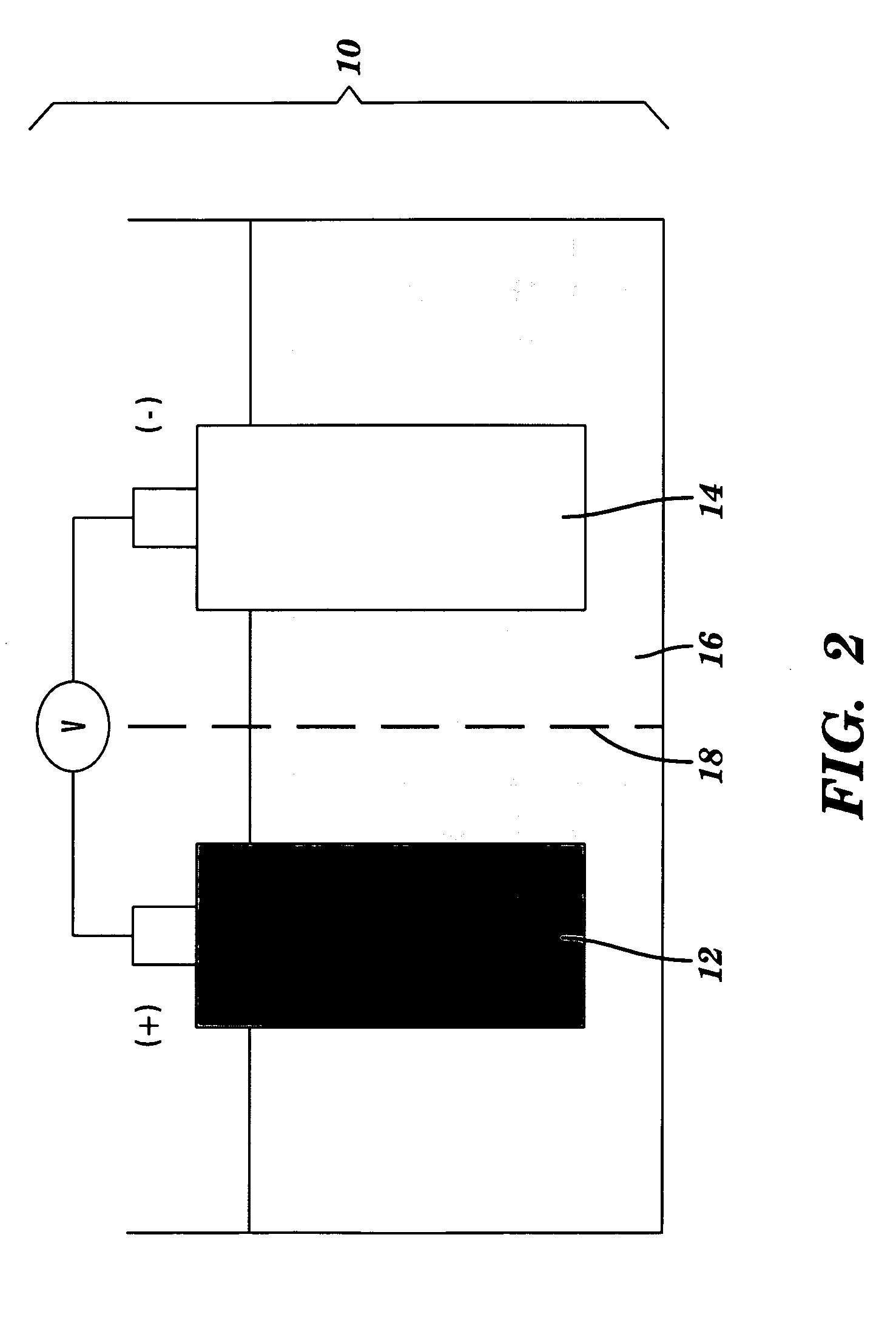Nano-composite structures, methods of making, and use thereof
a technology of nanocomposite and composite materials, applied in sustainable manufacturing/processing, non-aqueous electrolyte cells, non-metal conductors, etc., can solve the problems of poor cycle life characteristics of cells, increased cost of positive electrode materials, and higher cost of secondary batteries, so as to improve the electronic and ionic transport, the effect of efficient use of carbonous and high surface area
- Summary
- Abstract
- Description
- Claims
- Application Information
AI Technical Summary
Benefits of technology
Problems solved by technology
Method used
Image
Examples
example 1
Experimental Verification
[0077]Single wall carbon nanotubes were synthesized using pulsed laser vaporization and purified using the NanoPower Research Labs' (at Rochester Institute of Technology, Rochester, N.Y.) thermal oxidation profiling procedure to achieve carbonous purities equivalent to the “100%” reference sample.
[0078]In the present case, the synthesis conditions were as follows: the Alexandrite laser pulse was rastered (corner to corner over 1 cm2 with 50% overlap of 100 μs pulses at a repetition rate of 10 Hz) over the surface of a graphite (1-2 μm) target doped with 2% w / w Ni (2. The reaction furnace temperature was maintained at 1150° C., with a chamber pressure of 700 torr under 100 sccm flowing Ar in a 46 mm inner diameter (50 mm outer diameter) quartz tube. Purification of the raw SWNT soot was purified by conventional acid reflux. The ratio of materials for refluxing was as follows: 250 mg raw soot added to the acid solution (150 mL H2O, 36 mL concentrated HNO3 (69-...
example 2
Electrochemical Cycling Results
[0080]The freestanding electrode paper nano Si-SWNT was electrochemically cycled to determine the lithium ion capacity. A 6 mm disc was punched out, weighing 1.181 mg and sandwiched opposite pure lithium metal with a Celgard-2325 spacer. The electrolyte solution used was 1 M LiPF6 in ethylene carbonate: propylene carbonate:dimethylcarbonate (1:1:2% vol / vol). The charge / discharge rate was at 74 mA / g and the corresponding charge / discharge data is shown in FIG. 6. The results show reversible capacities exceeding 900 mAhr / g.
example 3
Purified SWNT Papers as a Catalyst Support by Deposition of Germanium Particles
[0081]The freestanding electrode paper using purified SWNTs was used as a catalyst support for the deposition of germanium nanostructures (10 nm) using thermal evaporation. A 6 mm disc was punched out, weighing 1 mg and sandwiched opposite pure lithium metal with a Celgard-2325 spacer. The electrolyte solution used was 1 M LiPF6 in ethylene carbonate: propylene carbonate:dimethylcarbonate (1:1:2% vol / vol). The charge / discharge rate was at 124 mA / g and the corresponding charge / discharge data is shown in FIG. 7. The results show initial reversible capacities exceeding 400 mAhr / g. This is another demonstration of purified SWNT papers being used as a catalyst support by the deposition of germanium particles using thermal evaporation.
PUM
 Login to View More
Login to View More Abstract
Description
Claims
Application Information
 Login to View More
Login to View More - R&D
- Intellectual Property
- Life Sciences
- Materials
- Tech Scout
- Unparalleled Data Quality
- Higher Quality Content
- 60% Fewer Hallucinations
Browse by: Latest US Patents, China's latest patents, Technical Efficacy Thesaurus, Application Domain, Technology Topic, Popular Technical Reports.
© 2025 PatSnap. All rights reserved.Legal|Privacy policy|Modern Slavery Act Transparency Statement|Sitemap|About US| Contact US: help@patsnap.com



